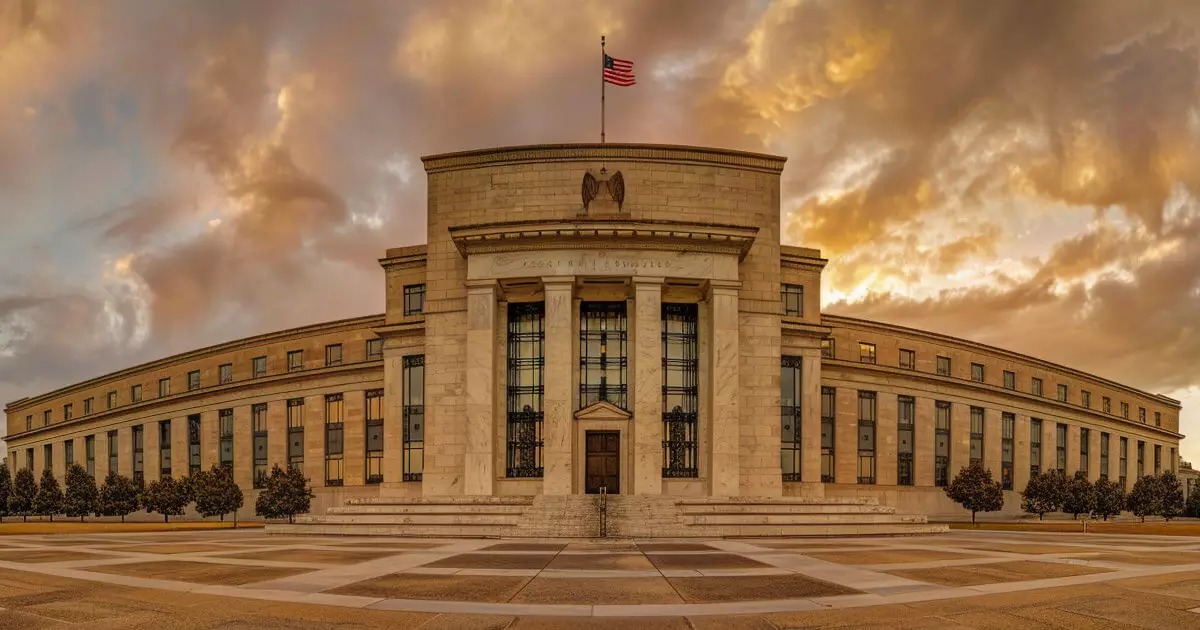In recent discussions surrounding the U.S. Federal Reserve’s approach to cryptocurrency regulation, the truth is glaring: the Fed has shown a blatant preference for large banking institutions at the expense of innovation. Caitlin Long, CEO of Custodia Bank, recently highlighted this troubling trend. The Fed’s supposed “relaxation” of certain regulations only serves to mask the reality that it continues to support policies that unfairly benefit major banks, effectively quashing any aspirations for a more democratized financial landscape.
As Long pointed out, the Fed rescinded multiple pieces of guidance last week but conveniently decided to maintain a particularly restrictive rule that obstructs banks from engaging directly with cryptocurrency. This selective rollback creates a dubious environment where only the largest banks can leverage the potential of stablecoin issuance while smaller institutions grapple with overly restrictive guidelines. Consequently, this not only discourages innovation among smaller players in the financial sector but effectively consolidates power within a few financial behemoths.
The Dichotomy of Private vs. Public Blockchains
Another crucial aspect of the Fed’s current stance is its promotion of private blockchain solutions—often linked to major banks—over decentralized public networks. Long makes a compelling case that the Fed’s existing policies, which prohibit banks from issuing stablecoins on public platforms like Ethereum, reinforce this monopolistic behavior. This is a glaring contradiction of the ideals of cryptocurrency, which aimed to empower individuals and democratize finances.
By compelling financial institutions to operate within closed environments, the Fed aims to retain control while stifling competition that decentralized networks could inspire. This approach runs counter to the very principles of innovation and access—key tenets of a flourishing economy. When only a select few have the right to operate in the crypto space, the risks of an entrenched banking oligopoly become alarmingly real.
Technical Barriers to Entry
One of the most significant barriers imposed by the Fed’s policies is the prohibition against banks using their own funds to cover transactional costs associated with blockchain technology. This quaint yet archaic rule complicates banks’ ability to serve clients interested in digital assets, quashing any semblance of efficient service. With banks unable to absorb fluctuating on-chain transaction fees, the prospect of providing crypto custody services becomes increasingly impractical.
Long’s warnings imply a future where banks may hesitate to engage with cryptocurrencies altogether, burdened by the financial mechanics that the Fed endorses. This lack of engagement inevitably leads to missed opportunities for technological advancement and the broader adoption of digital currencies.
Political Ramifications
The situation has prompted political discourse, as even influential figures like Senator Cynthia Lummis echo Long’s sentiments. Lummis has vehemently criticized the Fed’s recent regulatory adjustments as mere “lip service” that fail to address the underlying issues. Her assertion that there is lingering “reputational risk” discouraging banks from engaging with innovative assets only underscores the limitations imposed by the Fed and its longstanding policies.
As these political figures seek to hold the Fed accountable, one must wonder whether a more liberated regulatory framework can ever come to fruition. The formation of healthily competitive markets is contingent upon the acceptance of emerging technologies, yet, if the Fed continues to play gatekeeper, the dream of a robust digital economy may remain just that—a distant dream.
A Call for Comprehensive Reform
The Fed’s current diplomacy of obfuscation, where they suggest a willingness to embrace innovation while covertly upholding restrictive rules, is a disservice not just to smaller banks and upstarts, but to the very foundation of free-market principles. A serious reevaluation of these anti-crypto policies is critical if we wish to foster genuine innovation, encourage competition, and ultimately create a fairer financial system for all stakeholders involved. The time for action is now, and the need for a substantial overhaul has never been more pressing.


Leave a Reply